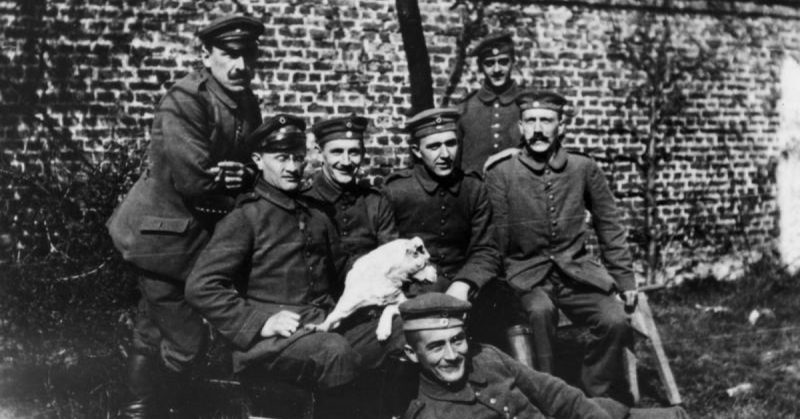WWI shaped the German army of WWII. Bitterness at their loss encouraged Nazism among the Germans and created scores of highly driven soldiers. The experiences of WWI also affected the skills, abilities, and outlook of the men who commanded in WWII.
Here are just some of the experiences that shaped them.
Adolf Hitler
Germany’s supreme commander in WWII had extraordinary experiences in WWI.
An Austrian with a strong sense of loyalty to Germany, he was allowed to join the Bavarian army at the start of WWI. He served Germany until the end of the war, most notably in the dangerous role of messenger between the trench lines. He was injured several times, including by artillery and gas; weapons of a distant and impersonal war. He survived the Massacre of the Innocents when many young Germans were killed in a costly and ineffective offensive.
Despite his suffering, the war was a positive experience for Hitler. He was decorated for his courage and respected by his peers. For the first time, he had access to the German middle class that he aspired to join. He saw war as a thing of comradeship and courage. It encouraged his idealization of violence and hatred of outsiders.
Heinz Guderian
Guderian was a junior officer in the German army when WWI broke out. Working in signals, he saw the potential of new communications technology, including radio and cryptography. He gained experience through being in a command center and completed his training to be a staff officer.
In the late stages of WWI, Guderian witnessed British tanks driving back German forces. Having seen the incredible power of those vehicles, he studied them after the war. Guderian became one of Germany’s most innovative and valuable tank commanders, bringing his signals and staff experience to shaping a new way of war.
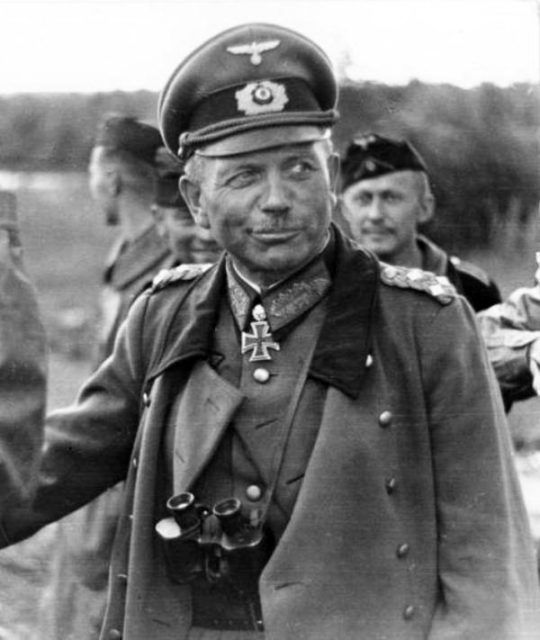
Albert Kesselring
When WWI broke out, Kesselring already had a decade of expertise in the Bavarian artillery. He spent the early part of the war with his artillery regiment, then became a staff officer. In that role, he showed his gift for military administration and logistics. He advanced through the ranks, while seldom seeing the dangers of war up close.
After the war, the army kept hold of Kesselring and his administrative skills. He argued for rebuilding the general staff and took part in Germany’s secret rearmament. He was one of the most senior commanders of WWII.
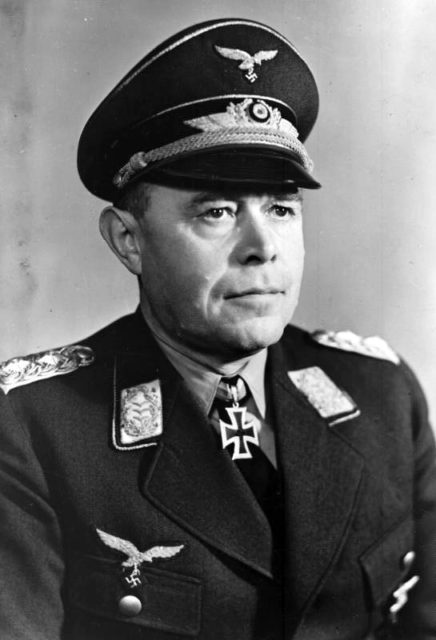
Josef “Sepp” Dietrich
Like Kesselring, Dietrich started in the artillery. He fought at Ypres, one of the most hotly contested sectors of WWI. In November 1917, he was awarded an Iron Cross.
Three months later, he was transferred to the Bavarian Storm Tank Detachment. There he served as a gunner in a captured tank. During fighting at Chemin des Dames in June 1918, his tank became stuck. He was part of the demolition crew that destroyed it to stop the Allies recapturing it. He earned a Bavarian Military Service Cross.
Both his tank experience and the work of WWI Storm Troopers shaped Dietrich’s career, as he went on to become an SS Panzer commander.
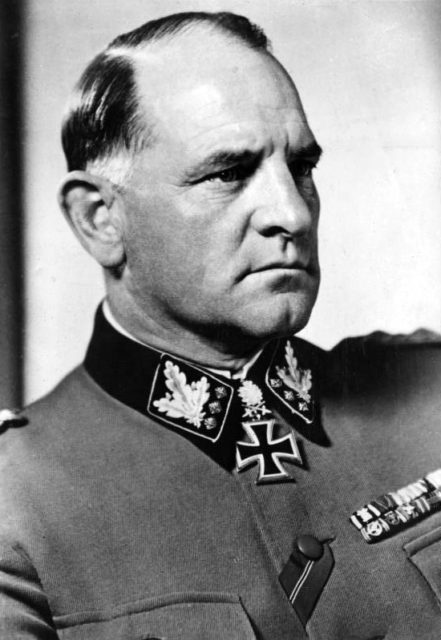
Kurt Student
Before WWI, Student was a young lieutenant in an army regiment. When the war broke out, he was sent on a pilot training course. It shaped his career.
At the start of WWI, combat between airplanes was unknown. The situation quickly changed, and countless young men died in the air war. During those four years of the war, the German Air Force was arguably the most innovative military institution in the world. Flyers such as Oswald Boelcke, Max Immelmann, and Manfred von Richthofen invented fighter combat as we know it.
Kurt Student was given command of a squadron in October 1916. In 1917, he was wounded in the fighting. By the end of the war, he had proven his ability as a commander. He had also spent years surrounded by men who encouraged innovative thinking and who demonstrated the power of aircraft. Bringing together those strands, he went on to create the Luftwaffe’s paratrooper forces and lead them in WWII.
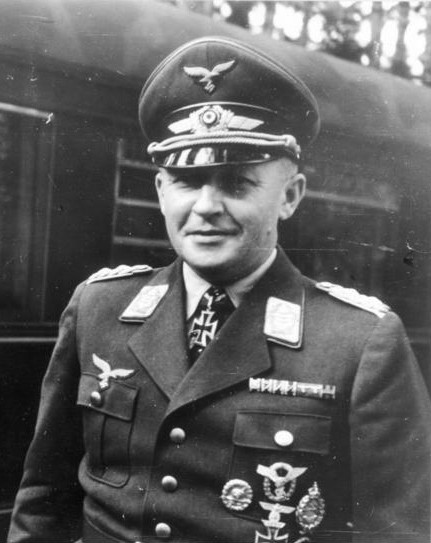
Hyazinth von Strachwitz
At the start of WWI, cavalry was still considered an important part of the military. One of its most important uses was in scouting out enemy positions.
Hyazinth von Strachwitz, a 21-year-old lieutenant in the Guards Cavalry Corps, volunteered to lead one of six dangerous long-range cavalry patrols. Together with 16 hand-picked men, he swept around behind the French army, gathering information on its location and condition. They also cut telegraph lines and blew up rail tracks. Meeting up with the other patrols, they pooled their intelligence, then made their way back to headquarters to report their findings.
For six weeks, Strachwitz led his men around France, gathering information and causing chaos. Troops were diverted to hunt them down. Fear stirred in Paris at the presence of Germans behind French lines. Along the way, Strachwitz found food for his men at local farms, always insisting on paying for it.
They had several close run-ins, losing their horses and then most of their uniforms. When they were eventually captured, they were tried as spies and almost faced the death penalty.
Late in the war, Strachwitz escaped from a prisoner of war camp. Trying to cross the Alps into Switzerland, he fell and was severely injured. He had to give himself up.
Strachwitz’s boldness and proven mastery of mobile warfare stood him in good stead. He became a tank commander in WWII, referred to as the Panzer Count.
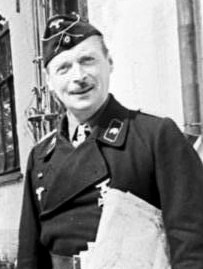
Sources:
Charles Rivers Editors (2014), The Red Baron: The Life and Legacy of Manfred von Richthofen
John Keegan (1987), The Mask of Command
James Lucas (1996), Hitler’s Enforcers: Leaders of the German War Machine 1939-1945
David Rooney (1999), Military Mavericks: Extraordinary Men of Battle
